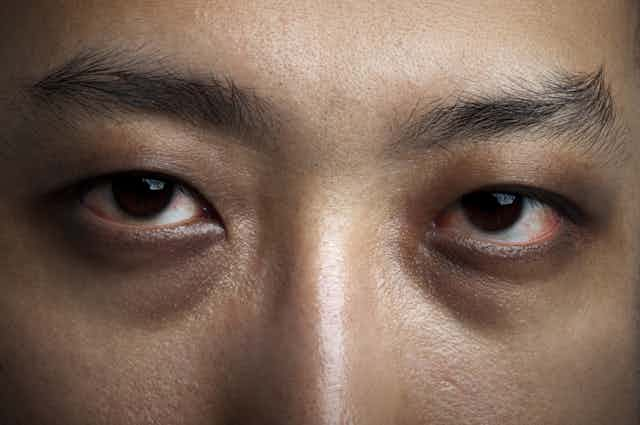Diabetes is a debilitating health condition which is expected to reach epidemic proportions in the next 20 years. According to the World Health Organisation, 108m people around the world had diabetes in 1980; by 2014 that figure was 422m. Three years later in 2017, 425m people worldwide were living with the disease and this figure is expected to exceed a staggering 629m by 2045.
There are two types of diabetes: people with type 1 are unable to produce the hormone insulin (from the pancreas) which is involved in controlling blood sugar levels. People with type 2 diabetes do not produce enough insulin or their bodies are resistant to it. As a result, both types can lead to high blood sugar levels, which increase the risk of diabetes complications.
Read more: Explainer: what is diabetes?
One is retinal disease (retinopathy), a leading cause of blindness in people of working age in developed countries. If blood sugar levels are constantly high in a person, this can damage their blood vessels. That means blood flow can be impeded or blocked and when that happens in the blood vessels serving the eye, the retina cannot work properly, leading to vision problems.
But our latest research reveals that dry eye disease (DED), another eye condition that receives much less attention, should cause concern for all people with diabetes – especially those with type 2 – when it comes to worsening sight.
The scourge of DED
People with diabetes are more likely to suffer from DED. But this condition is often overlooked during diabetic ophthalmic assessments which concentrate on retinal disease screening.
DED affects approximately 15% to 30% of those aged over 50. Although “dry eye” sounds like a relatively innocuous condition, symptoms can be very distressing, including blurred vision, pain, burning, itchiness, grittiness, dryness, corneal ulcers, and in severe cases, blindness. And because good vision is so intrinsically related to our daily lives, DED can affect people’s ability to drive, read, watch TV and use smartphones and computers.
This can have repercussions on the overall quality of life, with DED damaging emotional well-being, workplace productivity and other day-to-day activities. DED is known to have a similar negative effect on quality of life as much as that for people living with angina, hip fractures or those undergoing kidney dialysis.
Despite this, DED is not routinely assessed in those with diabetes because retinal disease monitoring is considered a more pressing concern, and so dry eye often goes untreated. To compound the problem, there has been little research investigating the effects of diabetes-associated DED on the quality of life of patients. There has also been little comparison of DED in type 1 and 2 diabetes, which have very different causes.

What we discovered
We studied people with diabetes versus those without it, to find out how many people had DED symptoms and to grade how severe they were. While there have been studies conducted on how widespread DED is in diabetes, our study is the first to assess the impact of DED on vision-related quality of life in these patients.
Our study demonstrated that DED is twice as common in type 2 diabetes (the type that makes up 90% of all diabetes cases) than it is in type 1. Using questionnaires that asked patients if they had symptoms of dry eye, we discovered that 55% of people with type 2 diabetes had DED, compared with 27% of those with type 1 and 29% of people who did not have diabetes.
We also found DED severely reduces quality of life in those with both DED and diabetes, and was significantly worse in those with both types of diabetes than for those without it. This raises major concerns, not only about the underdiagnosis of DED in diabetes, but also on the overall well-being of those with the condition.
These findings show, for the first time, that diabetes considerably compromises patients’ quality of life and that DED is a significant clinical eye condition for people with diabetes (particularly in type 2). And as DED is more dominant in type 2 diabetes, adding a clinical DED assessment to retinal screening could be beneficial for people with this condition.
In the long term, the additional screening cost could outweigh the loss of productivity and produce economic benefits in the form of improved overall well-being and eye health. A recent study showed a strong link between depression and dry eye symptoms. Relieving DED could improve the quality of life of type 2 patients – and with wider social, physical and psychological benefits, it should be a priority for eyecare professionals and patients alike.

